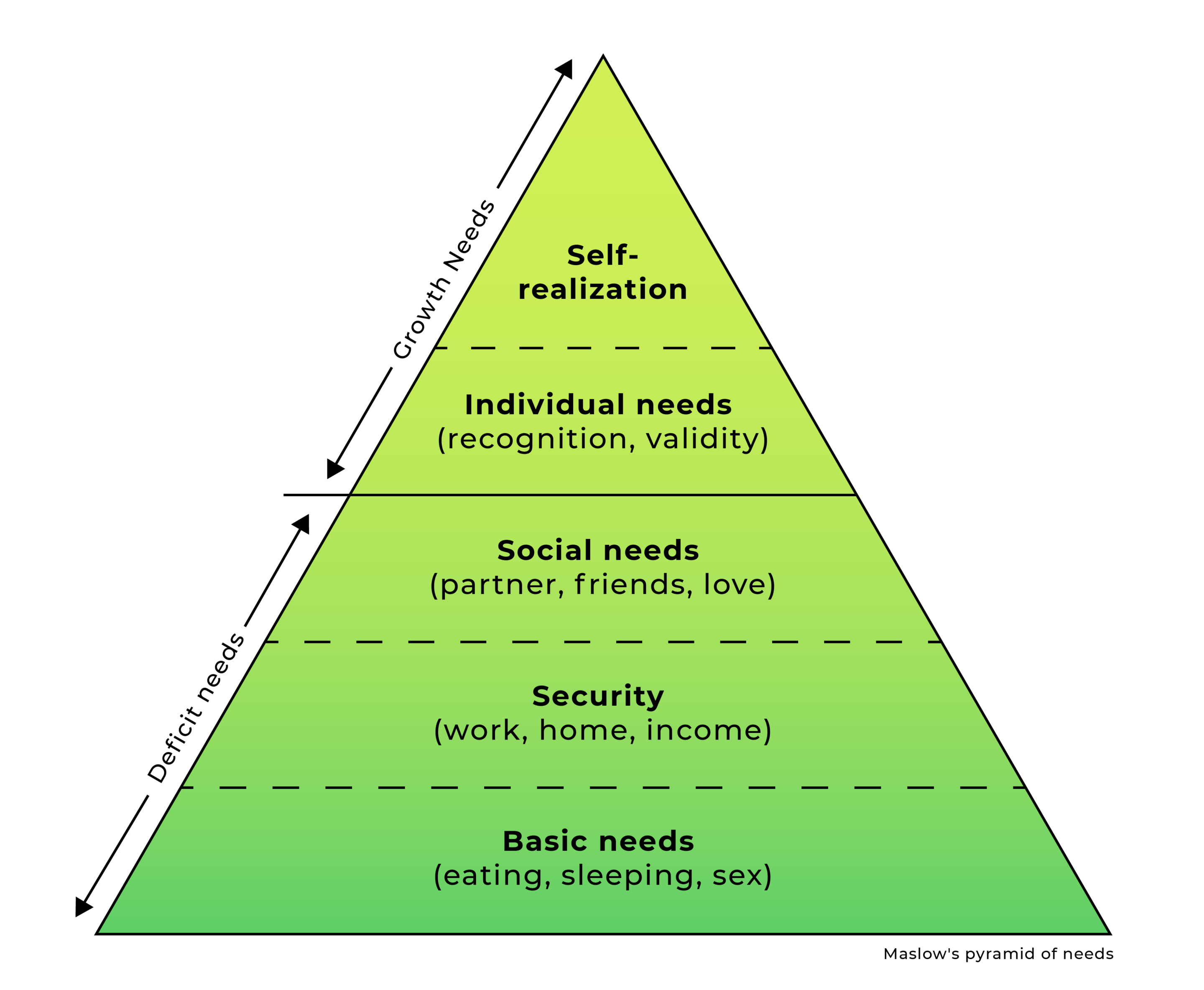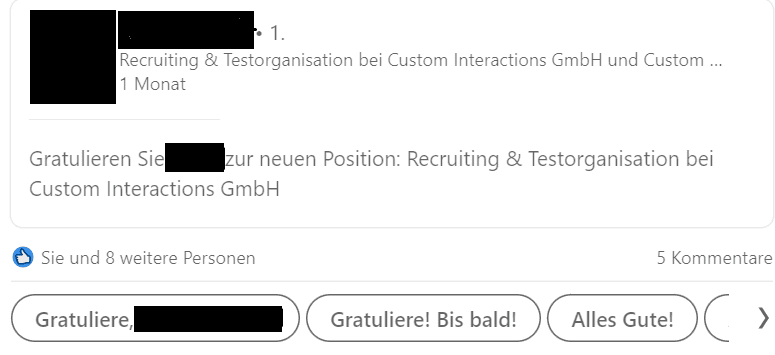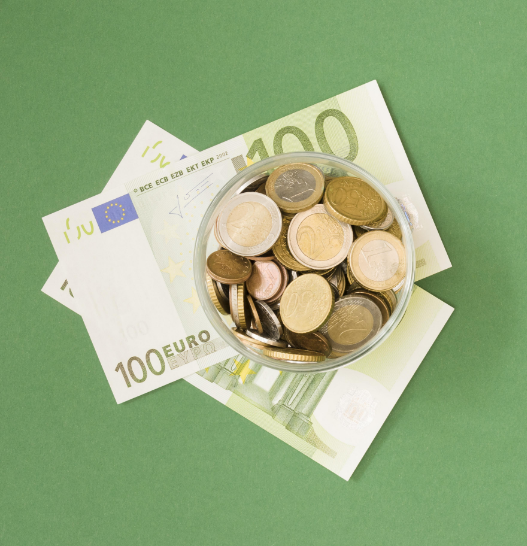What exactly is the need for meaningfulness? What role does it play for us as people and in technology use? What does it mean for your product design? And how can you specifically satisfy the need for meaningfulness with your product?
You will find answers to these questions in this article, which is part of our large “needs series”. This is based on the question “What makes products really cool?” Underlying. You will learn here how you can use targeted psychological product design to achieve a positive user experience.
The needs series: a recap (which you can safely skip if you’ve read the series up to this point 😊).
Our introduction: to achieve a positive user experience, you need to create positive emotions in the user. You achieve this by targeting the most important needs. So you benefit greatly from knowing your users along with their needs and how to tailor your product design to meet them.
In our introductory article, we also named the following shortlist of needs. All of them are particularly relevant for technology use. You can find the related articles for each need via the links.
Connectedness
Security
Competence
Popularity
Stimulation
Autonomy
Meaningfulness
(according to Sarah Diefenbach: “Experience Design Tools – Approaches to Interaction Design from the Perspective of Psychological Needs“)
Need for connectedness: The need for connectedness is deeply rooted in us. The second article in our series shows you how to specifically incorporate this need into your product design.
Need for security: Security comes from predictability, reliability and the absence of the unpredictable – you can incorporate this into the design of your product. This article shows you how.
Need for competence: Users want to feel their own self-efficacy and competence. With clear examples, we explain how you can incorporate this information into your product design.
Need for popularity: Part five of the series of needs shows that the need for popularity is about having influence and having one’s opinion valued. There are examples from the world of social media platforms, but also from other areas.
Need stimulation: Without sufficient stimulation, boredom quickly sets in for the user and this results in a poor user experience. We will show you how you can avoid this with clear examples.
Need for autonomy: If the need for autonomy is not satisfied when using technology, users quickly feel patronized and unfree. We will show you some examples of how this can be avoided.
In this article, we take a closer look at the need for meaningfulness and find out how exactly the satisfaction of this need can be integrated into one’s own product design.
The need for meaningfulness: a definition
To understand what exactly the need for meaningfulness is, let’s look at Sarah Diefenbach’s definition:
Meaningfulness: “The need to hold meaning and gain new insights.”
(source: Sarah Diefenbach “Experience Design Tools – Approaches to Interaction Design from the Perspective of Psychological Needs.”)
The need is expressed in a desire for:
- Sense development
- insight
- self-knowledge
- fulfillment
- Self-realization
(source: Sarah Diefenbach: Need cards)
How important is the need for meaningfulness?
If we look at Maslow’s pyramid of needs, we see that “meaningfulness” (here the need can be attributed to the terms “recognition” and “validity”) is one of the growth needs. It therefore only plays a decisive role for people when the deficit needs are fulfilled.

The fact that meaningfulness is nevertheless immensely important for us humans quickly becomes clear when we consider what the lack of meaningfulness and fulfillment triggers in us: We feel unmotivated, empty and somehow dull. Those who cannot realize themselves and see no meaning behind what they do quickly become unhappy and lethargic.
In an article, “Die Welt” defined depression as a “lack-of-sense disease” and impressively described the suffering behind the lack of meaning in one’s life. Moreover, it is suggested here that the need for meaning, significance and appreciation is not only psychological, but even biological in nature. The lack of experiencing meaningfulness in one’s life lowers dopamine levels and raises cortisol and norepinephrine levels – the result: stress, anxiety, and a sense of emptiness and meaninglessness. (Source: https://www.welt.de/gesundheit/article5562551/Depression-die-Krankheit-mit-dem-Mangel-an-Sinn.html).
What does this mean for our own product design?
Let’s recall the positive effects of meaningful experiences once again: The dopamine level rises. So you experience a feeling of happiness. So for your product design, this means that by specifically satisfying the need for meaningfulness, you trigger strong positive feelings in your users. This increases the user experience enormously and the use of your product is perceived as very pleasant (of course, other factors must also be right here).
We will now illustrate how exactly you can ensure meaningful experiences during use in two examples.
Example 1 for the satisfaction of the meaningfulness need: The feedback about the meaningfulness of the performed actions
When you do something that is consistent with your values and ideals, you experience sense-making. Demonstrating to your users that they have done something that aligns with their values and ideals will significantly help satisfy the meaningfulness need.
A feature for this would be messages and reminders that are played to the user, indicating that something good (from the user’s point of view) has been done here. This can be a notification, but also a note that clearly stands out from the rest of the information for a certain step (such as a payment process).
A specific example of this can be found in the app of the provider “Too Good To Go”. Here, the user can purchase so-called “Magic Bags”. These are bags of food that have found no takers at the end of the day. Buying such a “Magic Bag” saves money (because the goods are cheaper) and helps the environment (because it saves CO2). When you open the app, you get a clearly visible information about how much “good you have done”.
This looks like this:

Such news or statistics can motivate people to stay on task and reflect the significance of their own actions. They signal that one’s actions are important and help make the world a little better. It communicates: you are not only part of the solution, you are also part of a large group that is making a difference.
Example 2 for satisfying the need for meaningfulness: Capturing significant moments
Meaningfulness in technology use can also be experienced when significant and meaningful moments are captured and duly celebrated. Here, social media platforms have integrated some positive examples into their own product.
In very specific terms, this can mean, for example, that a user of the respective platform is played a “reminder,” i.e., a picture or a post from the past, in order to remind himself of significant moments.
Milestones such as an anniversary in one’s own profession are a good example here. This is how LinkedIn shows these significant moments to one’s network. Here in the form of a message:

New significant moments can also be duly celebrated and posted. For example, you can celebrate a new position on LinkedIn with an animated GIF.

Conclusion
The need for meaningfulness may belong to the growth needs and thus at first glance be less important than the deficit needs mentioned by Maslow, but if you look at what happens when the need is not satisfied, it quickly becomes clear how important it is. If there is a lack of meaningfulness in one’s life and actions, there are physical consequences. Anxiety and stress levels rise and a feeling of emptiness sets in.
So you should use psychological product design to avoid missing the satisfaction of the need for meaningfulness.
Does your product have features that satisfy the need for meaningfulness? Let us know in the comments.
Have questions about incorporating user needs in your specific case? Feel free to reach out via our contact form to schedule a free get-to-know-you call.
We are very much looking forward to your feedback!
Our need series
Here is our overview of the articles in the series:
Part 1: Introduction
Part 2: Connectedness
Part 3: Security
Part 4: Competence
Part 5: Popularity
Part 6: Stimulation
Part 7: Autonomy
Part 8: Meaningfulness



